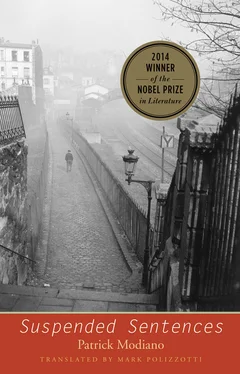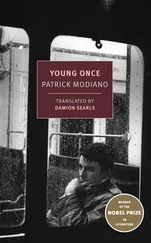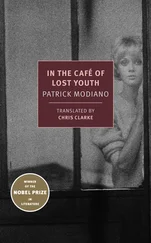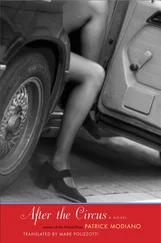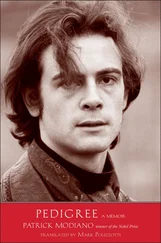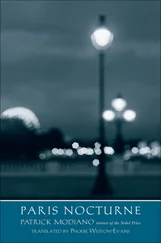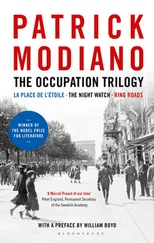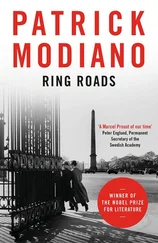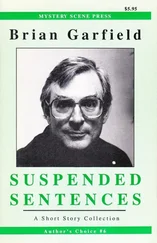She crops up again eleven years later, in the spring of 1944, in a small hotel on the Quai d’Austerlitz. She’s waiting for that Eddy Pagnon who, since the month of May, has been bootlegging wine from Bordeaux to Paris.
On evenings when he has to drive from Paris to Bordeaux, he stops the truck across from the hotel, on the sidewalk next to the river, in the shadow of two rows of plane trees. He goes to meet her in her room. Soon it will be curfew. The distant rumbling of the metro over the Pont de Bercy occasionally breaks the silence. Through the window of the hall that leads to her room, one can still see, in the twilight, the tracks of the Gare d’Austerlitz; but they’re deserted and one wonders if the station has been abandoned.
They have dinner downstairs, in the café. The door and windows have their curtains drawn because of the blackout. They are the only diners. They get served food from the black market, and the hotel manager, who was on the phone behind the counter, comes to sit with them. Pagnon makes his trips between Bordeaux and Paris on behalf of this man, who owns a warehouse nearby, on the Quai Saint-Bernard, at the Halle aux Vins, the central wine market. After dinner, the manager gives Pagnon a few final instructions. Sylviane then walks him to the truck on the Quai d’Austerlitz. The engine rumbles for a long while, then the truck disappears into the dark. She returns to her hotel room and lies down on the unmade bed. A bed with brass bars. Walls covered in old wallpaper with pink roses. A pause. She has known hotel rooms like this, when she was much younger, on nights when she didn’t go home to Chelles to sleep in her mother’s minuscule cottage.
She will wait for him until the following evening. He’ll drive the truck to the warehouse in the Halle aux Vins so they can unload his cargo and then he’ll go on foot from the Quai Saint-Bernard to the hotel. In that fleabag, she reconnects with the décor of her youth. As for me, I recall a childhood memory: fat Lucien P. sprawled on one of the leather armchairs in my father’s office. I had heard them talking one day about a certain Sylviane with auburn hair. Was it Fat Lucien who introduced her to my father or the other way around? From what he confided to me, my father had also frequented the Latin Quarter in the early thirties, in the same period and at the same age as Violette Nozière and Sylviane. Perhaps he had first met her in the billiards room of the Café de Cluny.
A little past the Quai d’Austerlitz, near the Pont de Bercy, do the warehouses known as the Magasins Généraux still exist? In the winter of ’43, my father had been interned in that annex of the Drancy transit camp. One evening, someone came and had him released: was it Eddy Pagnon, who was then part of what they later called the Rue Lauriston gang? Too many coincidences make me think so: Sylviane, Fat Lucien … I tried to find the garage where Pagnon worked before the war and, among the new scraps of information that I’ve managed to gather on him, there is this: arrested by the Germans in November 1941 for having double-crossed them in a black market affair involving raincoats. Detained at La Santé. Freed by Chamberlin, alias “Henri.” Goes to work for him on Rue Lauriston. Leaves the Rue Lauriston gang three months before the Liberation. Retires to Barbizon with his mistress, the marquise d’A. He owned a racehorse and an automobile. Gets himself a job as driver of a truck transporting wines from Bordeaux to Paris.
When my father left the Magasins Généraux, I wonder what route he took in the blackout. He must have felt dumbfounded at having been spared.
Of all the neighborhoods on the Left Bank, the area that stretches from the Pont de Bercy to the fences around the Jardin des Plantes remains the most crepuscular for me. One arrives by night at the Gare d’Austerlitz. And night, around here, smells like wine and coal. I leave behind the train station and those dark masses along the Seine that were referred to as the “Port of Austerlitz warehouses.” The automobile headlights or the flashlight illuminate a few feet of the Quai Saint-Bernard, just in front. The smells of wine and coal now mix with the scent of leaves from the botanical gardens, and I hear the cry of a peacock and the roar of a jaguar and a tiger from the zoo. The plane trees and the silence of the Halle aux Vins. I am enveloped by a cellarlike chill. Somewhere someone is rolling a barrel, and that doleful sound slowly fades into the distance. It seems that in place of the old wine market they’ve now erected tall concrete buildings, but wide as I might open my eyes in the dark, I can’t see them.
To reach the south, one needed to go through tunnels: Tombe-Issoire, Glacière, Rue de la Santé, lit at intervals by a blue bulb. And one emerged onto the sundrenched avenues and fields of Montsouris.
The Porte d’Italie marked the eastern border of that territory. Boulevard Kellermann led west, up to the Poterne des Peupliers. To the right, the SNECMA plant looked like a huge cargo ship run aground on the edge of the boulevard, especially on nights when the moon was reflected in its windows. A bit farther on, to the left, was the Charléty stadium. Weeds grew through cracks in the concrete.
I went to that neighborhood for the first time on a Sunday, because of a friend who had dragged me to Charléty. Despite being only seventeen, he had snagged a low-level job on a sports newspaper. They sent him to cover a footrace, and he wanted me to help him write his article.
There weren’t many of us in the stands. I remember the name of one of the runners: Piquemal. We asked him a few questions at the end of the race to flesh out the article. At around five, we waited for the number 21 bus, but it never showed. We then decided to walk to the center of Paris. The streets were empty in the bright sun. I could pinpoint the exact date: at the first newsstand we came across — not really a newsstand, more like one of those green canvas stalls that crop up on Sundays — I saw the photo and large headlines announcing the death of Marilyn Monroe.
After Charléty, the Cité Universitaire, and to the left, the Parc Montsouris. At the beginning of the street that skirted the park was an apartment building with large picture windows, where the aviator Jean Mermoz had lived. The shadows of Mermoz and SNECMA — a factory that made airplane engines — have linked that neighborhood in my mind with Orly airport, right nearby, and with the airfields of Villacoublay, Buc, and Toussus-le-Noble.
Restaurants that were almost rustic. Opposite the building where Mermoz would come home between two airmail runs was the Chalet du Lac. Its terrace opened onto the Parc Montsouris. And lower down, at the corner of Avenue Reille, a small restaurant whose garden was covered in gravel. In the summer, they set out tables and one could dine beneath the arbor.
For me, with the passage of time, that entire neighborhood has become gently detached from Paris. In one of the two cafés at the end of Rue de l’Amiral-Mouchez, near the Charléty stadium, a jukebox played Italian songs. The owner was a swarthy woman with a Roman profile. Summer light bathes Boulevard Kellermann and Boulevard Jourdan, deserted in midday. In my dreams, I see shadows on the sidewalks and the ochre façades of buildings that hide slivers of countryside, and from now on they belong to the outskirts of Rome. I walk the length of the Parc Montsouris. The foliage protects me from the sun. Farther on is the Cité Universitaire metro stop. I’ll reenter the coolness of the small station. Trains come at regular intervals and carry us to the beaches at Ostia.
Jacqueline had rented a room in one of those clusters of buildings on Boulevard Kellermann, built before the war on the site of the old fortifications. Thanks to fake student IDs, we could take our meals, for a mere five francs, at the Cité Universitaire cafeteria: it occupied the vast paneled foyer of a structure that called to mind the hotels of Saint-Moritz or Cimiez.
Читать дальше
